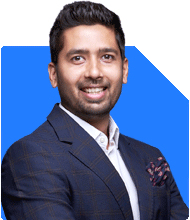Ramalingam Kalirajan |6345 Answers |Ask -Follow
Mutual Funds, Financial Planning Expert - Answered on Jun 25, 2024
He has an MBA in finance from the University of Madras and is a certified financial planner.
He is the director and chief financial planner at Holistic Investment, a Chennai-based firm that offers financial planning and wealth management advice.... more

Sir i have sold a commercial property for 1.5 cr. Have invested 50 lacs in rec bonds and 20 lacs in bajaj finance monthly payout fd @8.5c/o how do i invest the balance to generate around 50 k per month. Which i can withdraw
Current Investments and Situation
You've sold a commercial property for Rs. 1.5 crore and invested Rs. 50 lakhs in REC bonds and Rs. 20 lakhs in Bajaj Finance FD with a monthly payout at 8.5% interest. Now, you aim to invest the remaining Rs. 80 lakhs to generate a monthly income of around Rs. 50,000.
Evaluating the Bajaj Finance FD and its Risks
Bajaj Finance FD:
Risk Considerations: While Bajaj Finance FD offers attractive returns, it carries concentration risk as it's a single issuer. There's also interest rate risk if rates fall or reinvestment risk if you need to renew at lower rates in the future.
Investment Strategy for Generating Rs. 50,000 Monthly Income
To achieve your income target sustainably, here’s a diversified approach:
1. Debt Funds
Benefits: Debt funds offer diversification across multiple issuers and instruments like government securities, corporate bonds, and money market instruments.
Types: Consider short-term debt funds or debt funds with a dividend payout option to generate regular income.
2. Hybrid Funds
Balanced Approach: Hybrid funds (equity-oriented or conservative hybrid) provide a mix of equity and debt. They aim for capital appreciation with moderate risk.
Regular Dividends: Opt for funds with a history of regular dividends to supplement your income needs.
Investment Allocation Strategy
1. Debt Funds Allocation
Risk Profile: Choose funds with a lower duration or higher credit quality to manage risk effectively.
Income Generation: Expect periodic interest payouts that can contribute to your monthly income goal.
2. Hybrid Funds Allocation
Asset Allocation: Allocate a portion to conservative hybrid funds for stability and potential capital appreciation over the long term.
Dividends: Select funds that distribute dividends periodically to meet your income requirements.
Considerations for Long-term Sustainability
1. Risk Management
Diversification: Spread investments across different fund houses and categories to mitigate specific risks associated with any single investment.
Monitoring: Regularly review fund performances and economic trends to ensure your strategy aligns with changing market conditions.
2. Tax Efficiency
Taxation: Understand the tax implications of your investments, especially dividend income and capital gains, to optimize post-tax returns.
Future Planning and Adjustments
1. Estate Planning
Will and Nomination: Ensure your investments align with your estate planning goals, including nomination updates and inheritance considerations.
2. Review and Adjust
Periodic Reviews: Conduct annual reviews of your portfolio to rebalance and adjust investments based on performance and income requirements.
Financial Advisor Consultation: Consider periodic consultations with a Certified Financial Planner to refine your strategy as your financial goals evolve.
Final Insights
Investing Rs. 80 lakhs from the sale of your commercial property to generate Rs. 50,000 per month requires a balanced approach between debt funds for stability and hybrid funds for growth potential. By diversifying across these investment avenues, you can aim for sustainable income while managing risks effectively.
Best Regards,
K. Ramalingam, MBA, CFP,
Chief Financial Planner,
www.holisticinvestment.in
You may like to see similar questions and answers below
Kirtan A Shah |77 Answers |Ask -Follow
MF Expert, Financial Planner - Answered on Jul 28, 2023
Sanjeev Govila |458 Answers |Ask -Follow
Financial Planner - Answered on Feb 05, 2024
Ramalingam Kalirajan |6345 Answers |Ask -Follow
Mutual Funds, Financial Planning Expert - Answered on May 02, 2024
Ramalingam Kalirajan |6345 Answers |Ask -Follow
Mutual Funds, Financial Planning Expert - Answered on May 26, 2024
Ramalingam Kalirajan |6345 Answers |Ask -Follow
Mutual Funds, Financial Planning Expert - Answered on Sep 19, 2024
Ramalingam Kalirajan |6345 Answers |Ask -Follow
Mutual Funds, Financial Planning Expert - Answered on Sep 19, 2024
Ramalingam Kalirajan |6345 Answers |Ask -Follow
Mutual Funds, Financial Planning Expert - Answered on Sep 19, 2024
Milind Vadjikar |166 Answers |Ask -Follow
Insurance, Stocks, MF, PF Expert - Answered on Sep 19, 2024
Ramalingam Kalirajan |6345 Answers |Ask -Follow
Mutual Funds, Financial Planning Expert - Answered on Sep 19, 2024
Dr Nagarajan J S K |120 Answers |Ask -Follow
Health Science and Pharmaceutical Careers Expert - Answered on Sep 19, 2024
Ramalingam Kalirajan |6345 Answers |Ask -Follow
Mutual Funds, Financial Planning Expert - Answered on Sep 19, 2024
Dr Nagarajan J S K |120 Answers |Ask -Follow
Health Science and Pharmaceutical Careers Expert - Answered on Sep 19, 2024
Dr Nagarajan J S K |120 Answers |Ask -Follow
Health Science and Pharmaceutical Careers Expert - Answered on Sep 19, 2024
Dr Nagarajan J S K |120 Answers |Ask -Follow
Health Science and Pharmaceutical Careers Expert - Answered on Sep 19, 2024























